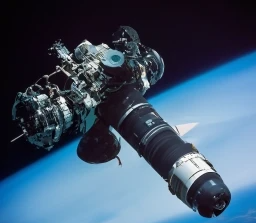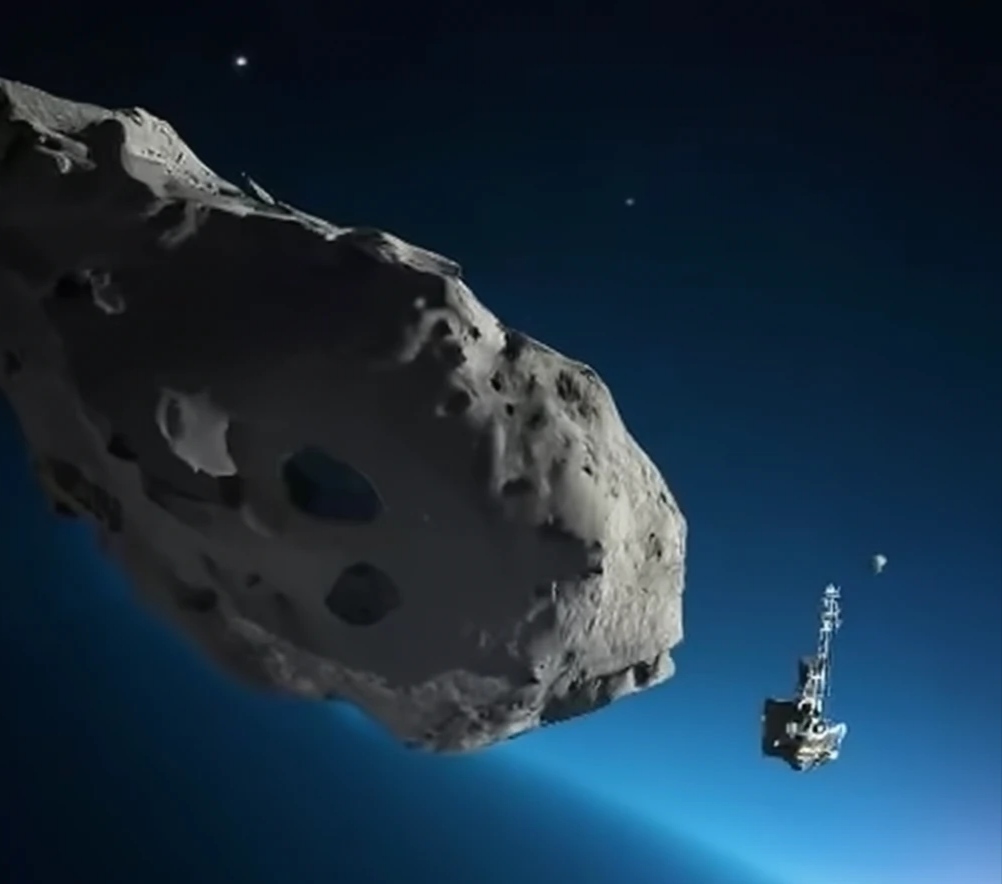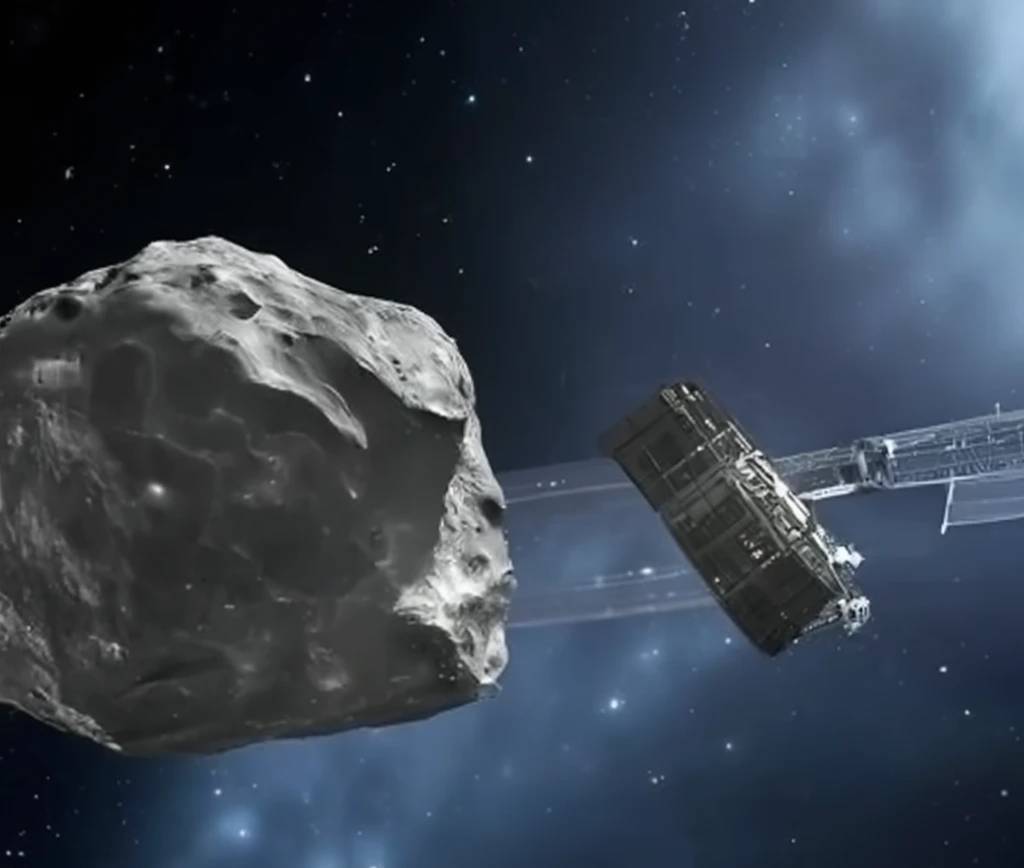Traveling the Heart of a Supernova Explosion via a Dynamic Stream of Neutrinos
What is a Supernova?
Type II Supernovae (SN), triggered by the Gravitational Collapse of Massive Stars, emit a substantial portion of their energy in the form of Neutrinos (Figure 1). These elusive particles, constituting what is known as the Supernova Relic Neutrino (SRN) background [1], could potentially be detected by large underground neutrino detectors, such as the Super - Kamiokande and Sudbury Neutrino Observatory (SNO) detectors.
The primary objective of these detectors is to capture traces of this elusive SRN background. The SN II Rate Evolution [2], coupled with the Metal Enrichment History [3], forms the basis of predicting the SRN Flux. By relating observations of Star Formation and metallicity enrichment, one establishes a robust framework for estimating the supernova rate and, consequently, the SRN flux.

Figure 1. Representation of an Exploiting Supernova
The Photophysical Fingerprint of Neutrinos
The composition of neutrinos reaching Earth, originating from past supernovae, relies on several factors. First, it hinges on the differential flux of neutrinos per unit energy interval emitted by each supernova. Secondly, it is influenced by the distribution of supernova rates with respect to Redshift. Additionally, it's contingent upon a Friedmann-Robertson-Walker Cosmology, typically characterized by parameters such as the Hubble Parameter, H0 and the Matter Density Parameter, [math]\small{\Omega_{0}}[/math] (further information in here, Section 4).
The Spectrum (Figure 2) of neutrinos emitted from a supernova is characterized by a Fermi-Dirac Distribution with zero Chemical Potential, normalized to the total energy emitted by the supernova. For each Neutrino Species, [math]\small{\nu}[/math], the Neutrino Luminosity, L [math]\small{{_{\nu}}^{S}}[/math]([math]\small{\epsilon}[/math]) can be defined as:
Equation 1. Neutrinos Luminosity Equation
where the apex [math]\small{S}[/math] stands for "Spectrum"; [math]\small{\epsilon}[/math] is the Neutrino Species Energy for a singluar neutrino; [math]\small{E_{\nu}}[/math] and [math]\small{T_{\nu}}[/math] are, in the order, the Neutrino Species Total Energy and the Temperature Parameter derived by the neutrinosphere during the collapse, and both dependent on the Progenitor Mass of the supernova. However, obtaining the Initial Mass Function (IMF)-averaged neutrino flux is simplified because [math]\small{T_{\nu}}[/math] doesn't vary significantly with the progenitor mass.
Assuming that the Supernova Rate, [math]\small{N_{SN}}[/math]([math]\small{z}[/math]) follows the Metal Enrichment Rate, it can be expressed like below.
Equation 2. The form of Supernova Rate
[math]\Large{z}[/math] is the Redshift value; [math]\large{Z}[/math] is Atomic Number of a chemical element; [math]\large{\dot{\rho}_{Z} (z)}[/math] represents the Metal Enrichment Rate per unit comoving volume and [math]\large{\langle M_{Z} \rangle}[/math] denotes the Average Yield of Heavy Elements per supernova.
To track the metal enrichment rate, one can assume a constant supernova rate at higher redshifts ([math]\small{z > 1} [/math]) due to the limited knowledge of high-redshift evolution. This assumption is supported by various independent studies showing consistent evolutionary patterns.
Looking for Elusive Particles!
Detecting relic neutrinos from supernovae poses significant challenges, particularly across various energy ranges. SuperKamiokande, for instance, has an observable energy window estimated to span from 19 to 35 MeV. However, below 10 MeV, the contribution from neutrinos generated by reactors and those from Earth is expected to overshadow any relic neutrino signal. Beyond 10 MeV but still below the observable window, background sources include solar neutrinos, external radiation, and events induced by Cosmic - Ray Muons [4] within the detector.
Atmospheric neutrinos become the primary background above 19 MeV. As energy surpasses approximately 35 MeV, the rapidly diminishing flux of relic neutrinos becomes less significant compared to atmospheric neutrinos. The Efficiency [5] of this detector within the observable energy window is assumed to be 100%.
Given the detector's specifications, the predicted event rate at SuperKamiokande for SN relic neutrinos can be calculated, and it is suggested being a peaked distribution. The flux at the detector is assessed across various energy ranges, with considerations for background sources and detector capabilities.

Figure 2. The Rainbow is an example of Electromagnetic Spectrum including Radiation in the Visible Energy Window
A Troublesome Research
One can present conservative upper bounds on the expected SRN event rates, indicating challenges in detecting these elusive particles. Despite advancements in detector technology, the Signal - to - Background Ratio remains a significant obstacle. Future research directions, including refining metal enrichment history models and exploring alternative detection strategies will be discussed.
- ScienceDirect. "Discovery potential for supernova relic neutrinos with slow liquid scintillator detectors "https://www.sciencedirect.com/science/article/pii/S0370269317302629
- STScl. "The Evolution of the Cosmic Supernova Rates" https://www.stsci.edu/files/live/sites/www/files/home/jwst/about/history/design-reference-mission-drm/_documents/drm11.pdf
- Springer. "Metal enrichment history of the proto-galactic interstellar medium" https://link.springer.com/article/10.1023/A:1019527307631
- PhysicsOpenLab.org. "Cosmic Ray Muons & Muon Lifetime " https://physicsopenlab.org/2016/01/10/cosmic-muons-decay/
- KNS.org. "Detection Efficiency Calculation and Evaluation for Condenser Off-gas Radiation Monitoring System " https://www.kns.org/files/pre_paper/45/21S-123-%EA%B9%80%EC%9B%90%EA%B5%AC.pdf








